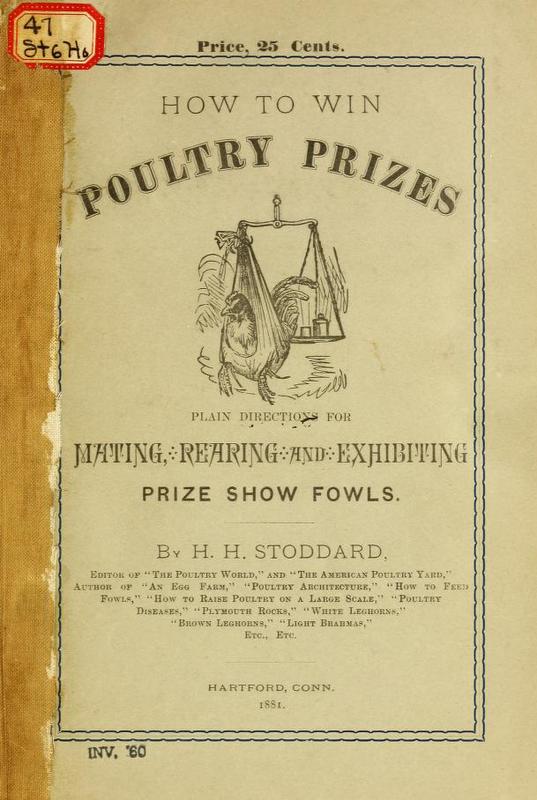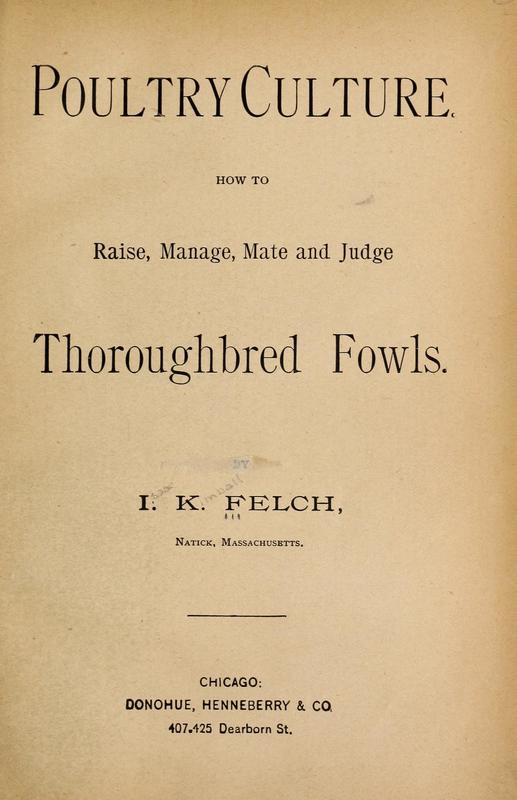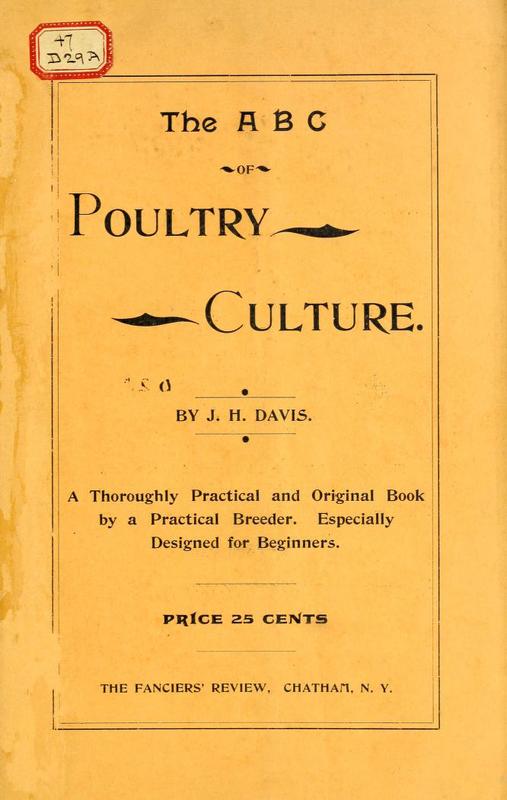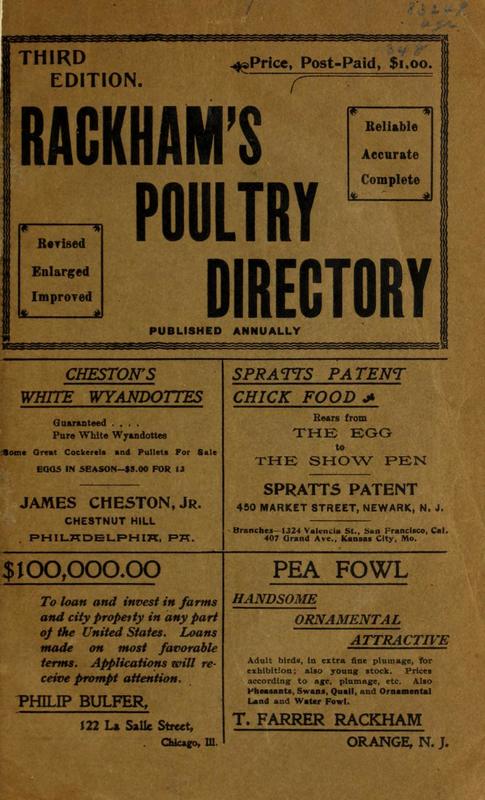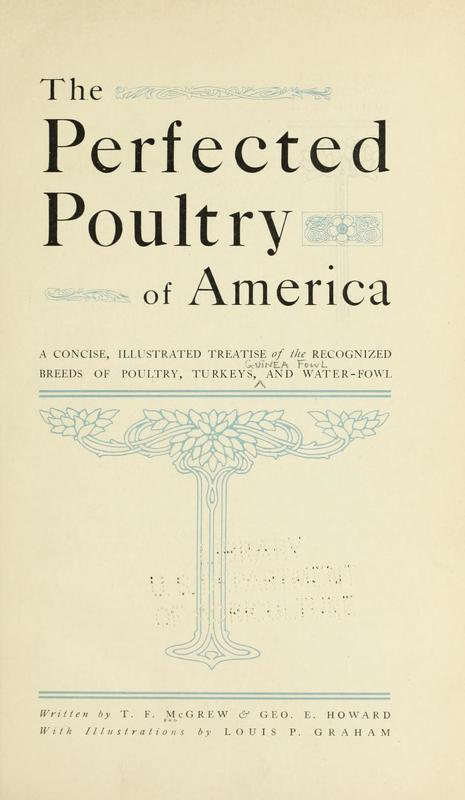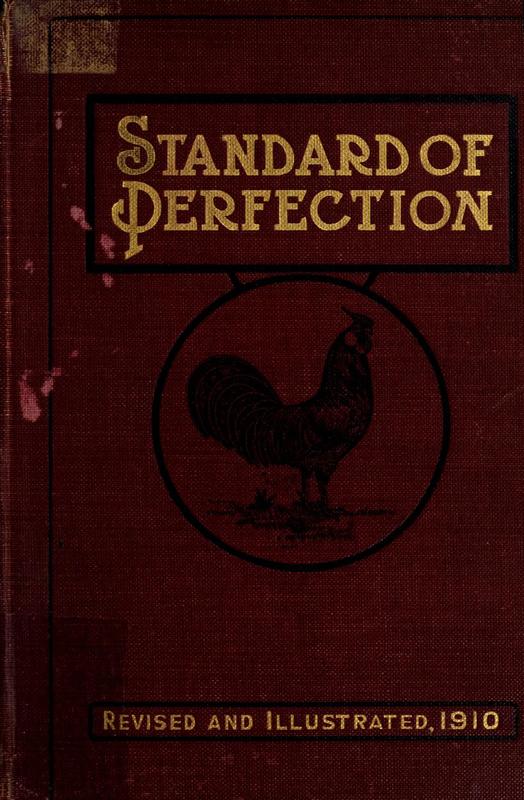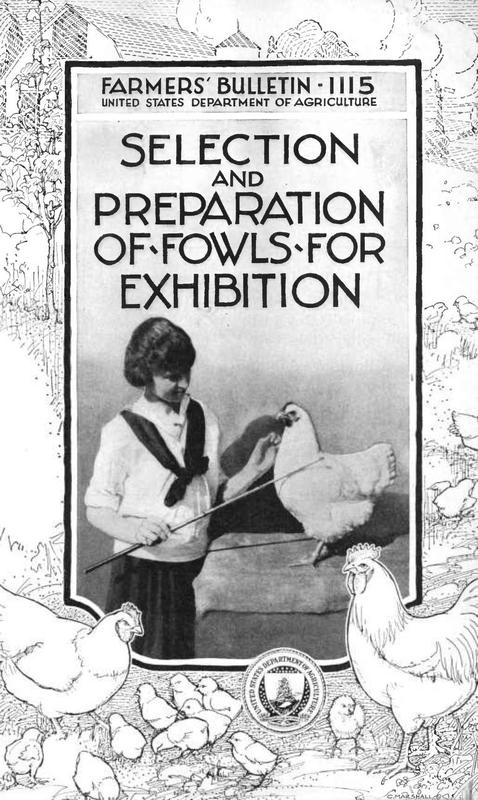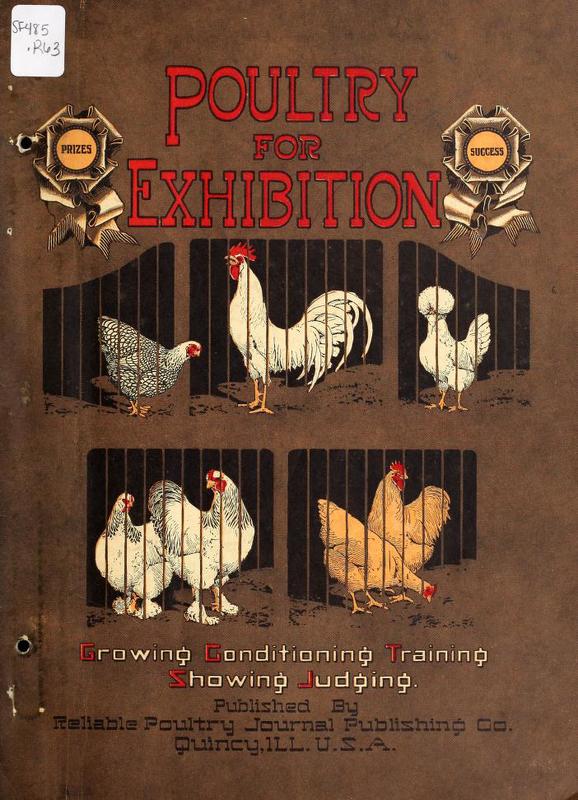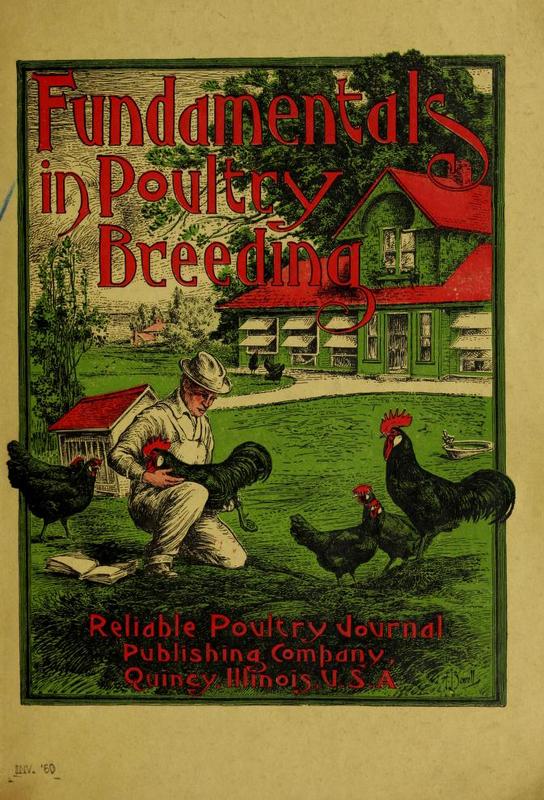Exhibiting Poultry in Competition
How to Win Poultry Prizes: Plain Directions for Mating, Rearing and Exhibiting Prize Show Fowls
Stoddard, H. Hudson, 1881
"Man is combative, fond of emulation, and ever on the alert to possess something new. These peculiarities show themselves in various ways : sometimes in the display of dress or equipage, sometimes in trials of personal strength or endurance, and in other cases we see only a generous and good-natured competition about the possession of some desirable and useful article of property. This rivalry often causes genuine improvement in live stock, and results in benefit to all parties concerned."
Poultry Culture: How to Raise, Manage, Mate and Judge Thoroughbred Fowls
Felch, Isaac Kimbal, 1885
"Not long ago I took a journey with an old friend through the eastern portion of Massachusetts. The main purpose of our trip was to find out a suitable place for the establishment of poultry breeding on a very extensive scale. One day, in the course of conversation, my friend said to me: "Mr. Felch, if you will write a poultry book, telling what you know about the management of chickens from shell to griddle, giving a bill of fare, and showing how to care for them each and every day till they are four months old, taking nothing for granted, but giving the results of your own experience and observation, your book would be invaluable to every poultryman and breeder in the land."
The A.B.C. of Poultry Culture. A Thoroughly Practical and Original Book by a Practical Breeder. Especially Designed for Beginners
Davis, J. H., 1894
"The author of this work, gives his individual experience here without reference to other works. He says what he has to say plainly, honestly, and with a view to benefit those who read it. He deals in no ambiguous terms or phrases, and does not attempt to be profound, and consequently prosy. This work has the merit of originality, whatever else it may lack. It is especially adapted to beginners. If old " Chicken Cranks " can learn anything from these pages or even be amused, the writer will be satisfied. One man cannot know it all. The knowledge here obtained is not borrowed. It is the result of years of application. You will find no theories in this work. Not even a little unfledged one. It is intensely practical, but not methodical. It abounds in facts from my standpoint, and facts are what you are after. Read it carefully. Experience will prove or disprove its merits."
Rackham's Poultry Directory: Is an Annual Publication Containing the Names and Addresses of Most of the Reliable Poultry Breeders and Fanciers in American and Canada, Together With a Complete List of Judges, Specialists, Experts, Merchants, Manufacturers, Dealers, Associations, Papers, Books, Supply Dealers, Breeds, &c., &c. And Other Useful Information Relating to Poultry Culture
Third Annual Edition, 1900
"The third edition of Rackham's Poultry Directory is presented to the fraternity with the feeling that it is even more accurate than the previous editions. Yet there still remains room for improvement and we are ever ready to follow any suggestions that will add to its value. A directory of any kind is one of those things which, when worthy of the name, should find a hearty welcome on all sides. It is as advantageous to the seller as to the buyer, and in the case of a Poultry Directory, fills a long-felt want. No pains or expense have been spared to make it just what it should be —a directory in fact as well as in name."
The Perfected Poultry of America: A Concise, Illustrated Treatise of the Recognized Breeds of Poultry, Turkeys, and Water-Fowl
McGrew, Thomas Fletcher
Howard, George Ellsworth, 1907
"That the poultry interests of America have long demanded a book like this can not be doubted. The great volume of literature on the subject is so disconnected that it would be next to the impossible to trace the subject-matter with any degree of satisfaction. Therefore, the importance of having in one volume the information pertaining to the Perfected Poultry of America has long been realized by those interested in the poultry industry.
The authors appreciated this fact very fully, and began the foundation work years ago, fully understanding their responsibilities and obligations to each individual variety of fowls herein represented. It is essential for every breeder of thoroughbred poultry, desiring success, to have a better understanding of his fowls, and he should not only know their history, qualifications, and general appearances, but their points of excellence as well. To do this properly, we have drawn upon every source of information at our command, and have endeavored to present our results without partiality to any breed or variety. We have given the facts and truths of the recognized breeds of Perfected Poultry as we have found them in every-day life, using living models and personal experiences as the foundation of our work."
The American Standard of Perfection, Revised and Illustrated
American Poultry Association, 1910
"The American Poultry Association was organized at a meeting held in the city of Buffalo, New York, February 15, 1873. The attendance was composed principally of delegates from state and county associations, prominent breeders and fanciers from different parts of the United States and Canada, and other interested persons. The object was to formulate and adopt a standard of excellence to be used exclusively by associations in awarding prizes on exhibition poultry. A constitution and by-laws were adopted, and a complete standard was made for all the then-recognized varieties of domestic and ornamental fowls. Mr. W. H. Churchman, of Wilmington. Delaware, was the first president, and Mr. J. M. Wade, of Philadelphia, Pennsylvania, the first secretary. Provision was made for annual meetings, at which changes could be made in the adopted standard, and matters of national importance concerning the poultry interest might be considered and acted on."
Homemade Poultry Appliances For Poultry Club Members
U.S. Department of Agriculture. Bureau of Animal Industry. Animal Husbandry Division, 1918
"THE EXHIBITION or show coop illustrated on the front page can be easily made and is for the use of poultry club members in exhibiting fowls at county and school fairs or other exhibitions. It should not be used for shipping poultry but may be used to take the birds to the show if carried by wagon or other vehicle. It can be made from a dry goods box or almost any other available material; the floor to be solid and the frame work of wooden strips 2 inches wide and 1 1/2 inches thick. The top, back and sides may be covered with lath, wire netting, or any kind of thin, strong cloth. The front should be of 2-inch wire netting. If impossible to obtain netting, however, lath may be used, but should be placed about 2 1/2 inches apart so as to afford as much opportunity as possible to see the birds. The coop is made 2 feet wide, 2 feet deep and 2 feet high and will accommodate one mature bird or a pair of chickens. If more than this are to be exhibited together, the coop should be made larger in proportion to the number of fowls it is to accommodate."
Selection and Preparation of Fowls for Exhibition
Kinghorne, J. W., 1920
"This Bulletin has been written briefly and in simple terms for beginners, and especially for members of Boys' and Girls' Poultry Clubs.
Poultry exhibitions are not only of educational value but encourage the desire to excel in producing a high quality of stock."
Standard Poultry for Exhibition
Robinson, John Henry
Franklane, Sewell L., Illustrator
Schilling Arthur O., Contributor, 1921
"A Complete Manual of the Methods of Expert Exhibitors on Growing, Selecting, Conditioning, Training and Showing Poultry--Fully Describing Fitting Processes and Exposing Faking Practices--Briefly Explaining Judging for the Amateur and Furnishing The Student of Judging an Exhaustive Analysis of the History, Philosophy and Merits of Comparison and Score-Card Systems"
Fundamentals in Poultry Breeding: A Complete Guide to the Successful Breeding of American Standard Fowls, Turkeys, Ducks and Geese for Table Poultry, for Egg Production and for Exhibition
Robinson, John Henry, 1921
"The breeding of poultry to high standards of productiveness and beauty is one of the most fascinating pursuits in which people of creative instincts and cultivated taste can engage. It is also the line of such work open to the greatest number of people.
In the nature of the case the work of systematic improvement of nearly all our domestic animals and a few of the larger kinds of domestic birds can be done only on farms, by persons who can give their time largely to such work, and who are able to invest considerable capital in it. Poultry breeding also has its inducements for this class of breeders, but in addition, its opportunities are open, on a scale proportionate to the land available and the leisure time that can be employed in it, to every-one who has land room to grow a few birds — if only bantams — every year."
The Asiatics. Brahmas, Cochins and Langshans. All Varieties. Their Origin; Peculiarities of Shape and Color; Egg Production; Their Market Qualities; Breeding, Mating and Exhibiting, With Detailed Instructions on Judging
Reliable Poultry Journal Publishing Company, n.d.
 An official website of the United States government.
An official website of the United States government.


